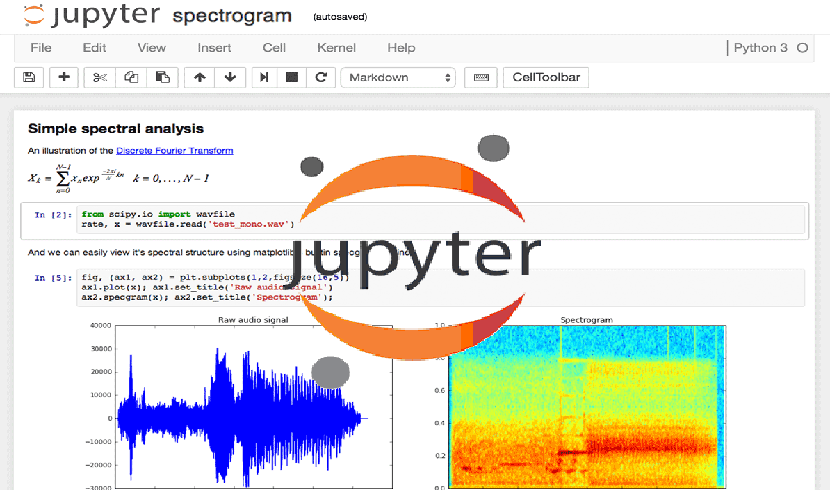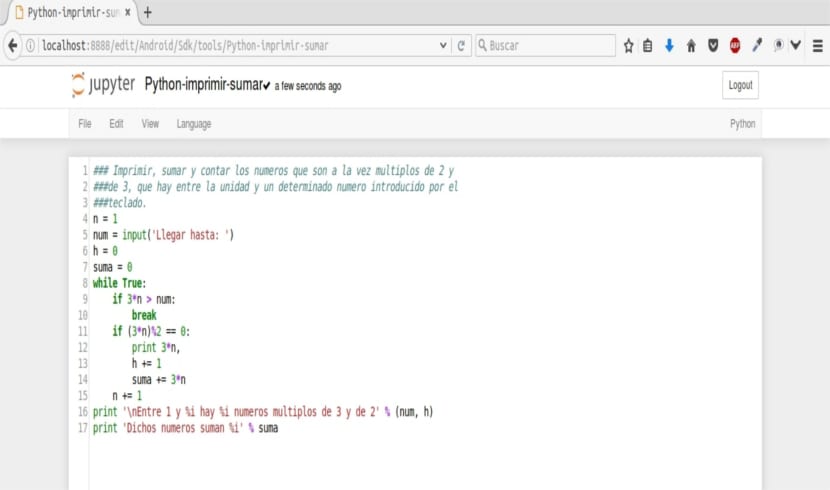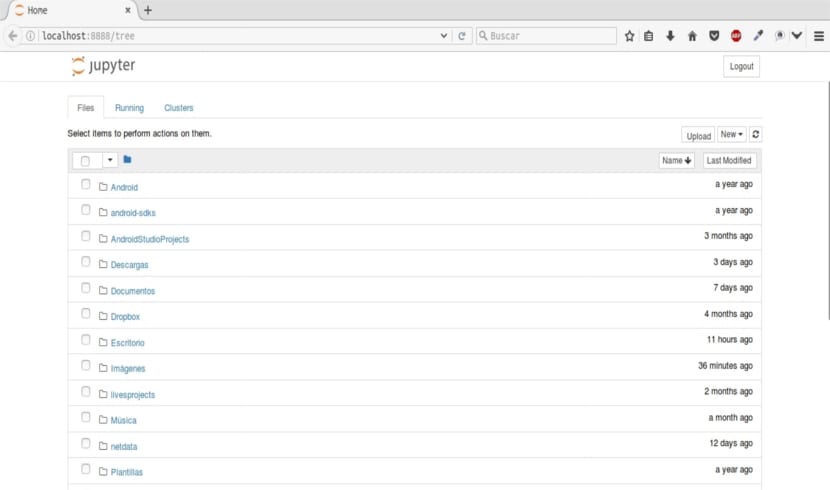
In the next article we are going to take a look at the Jupyter Notebook. This is one open source web application which has been developed using HTML language. With this, it has been achieved that users can create, share and edit documents in which Python code can be executed in our browser. We can also make annotations, insert equations, view results and document functionalities.
This application is generally designed to have a advanced Python support. It includes the possibility of exporting documents made with the tool to other formats. The general purpose for which this tool was created is to be used in learning the Python programming language. We can also obtain cleaning and transformation of scientific data, numerical simulation or statistical modeling. These are just some of the areas with which we can also work with this application.

Jupyter Notebook is a very useful tool for those who are starting in the world of programming with Python. It also has great potential for those who want to study data science in an orderly manner. With all the power that Python can offer us, document all the scientific basis that we have used in the project at hand.
General characteristics Jupyter Notebook
Some of the many features of Jupyter Notebook that we could highlight would be:
- Su installation is simple. We can install it thanks to the fact that it is present in the Anaconda Distribution Suite. We will also have the option to install it using pip (which will be the way I will install it in this article).
- It has a advanced web interface. With it we can combine source code, texts, formulas, figures and multimedia in a single document.
- La integration of different types of information it will allow us to give the most adequate explanations of our programs or of the concepts that we are using in the project.
- It will allow us the access from anywhere without the need to install other services. This program works as a client server, it can also be run on a local desktop or on a remote server.
- Although the fundamental programming language in Jupyter Notebook is Python, this application is also compatible with more than 40 languages.
- We will be able to carry out the Jupyter document exchange through third party services.
- We can run and display images, videos, LaTeX and JavaScript, in addition to manipulating the results of the same in real time.
- We will have a advanced document manager. This will allow us to view the files compatible with Jupyter Notebook that are hosted on our computer.
- Documents made in Jupyter Notebook can be export to different static formats. These include HTML, reStructeredText, LaTeX, PDF, and slide shows.
- Es support Nbviewer. This will allow us to port our Jupyter Notebook documents to the cloud as a static web page. This page can be viewed by anyone without having to have this application installed.
Install Jupyter Notebook
If we have previously installed Anaconda Distribution we will already have Jupyter Notebook installed. So we can run it from the terminal (Ctrl + Alt + T) by typing:
jupyter-notebook
In case you do not want to install Anaconda Distribution, we will have the option to install Jupyter Notebook using pip from Python. To do this, we will only have to open a terminal (Ctrl + Alt + T) and execute the following command:
pip install notebook
Once the installation is finished, we can launch the program using the following command in the same terminal:
jupyter-notebook
Before installing any packages on our computer, we can use the online demo that its creators make available to users to test this project. In addition we will also have at our disposal an extensive documentation of all its functionalities that we can learn more about in its Official Site. If we want to take a look at the source code of the project, we can do it on the page of GitHub that we have available to users.
Uninstall Jupyter Notebook
To remove this program from our Ubuntu, we will only have to open a terminal (Ctrl + Alt + T) and write the following:
pip uninstall notebook

Programming codes? That is cool to me ...
Excellent guide, very specific without going around the bush.